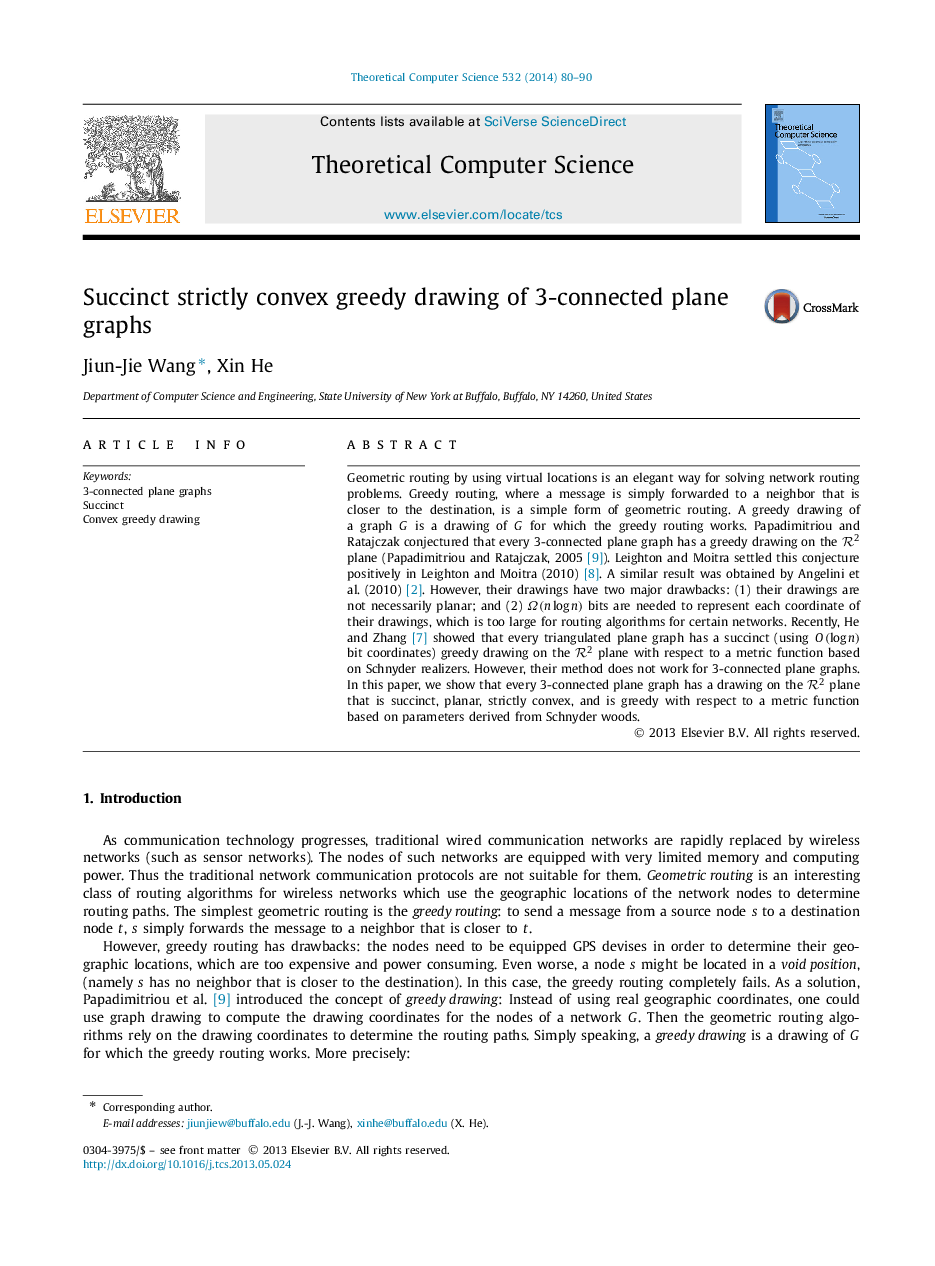| Article ID | Journal | Published Year | Pages | File Type |
|---|---|---|---|---|
| 438304 | Theoretical Computer Science | 2014 | 11 Pages |
Geometric routing by using virtual locations is an elegant way for solving network routing problems. Greedy routing, where a message is simply forwarded to a neighbor that is closer to the destination, is a simple form of geometric routing. A greedy drawing of a graph G is a drawing of G for which the greedy routing works. Papadimitriou and Ratajczak conjectured that every 3-connected plane graph has a greedy drawing on the R2 plane (Papadimitriou and Ratajczak, 2005 [9], ). Leighton and Moitra settled this conjecture positively in Leighton and Moitra (2010) [8], . A similar result was obtained by Angelini et al. (2010) [2], . However, their drawings have two major drawbacks: (1) their drawings are not necessarily planar; and (2) bits are needed to represent each coordinate of their drawings, which is too large for routing algorithms for certain networks. Recently, He and Zhang [7] showed that every triangulated plane graph has a succinct (using bit coordinates) greedy drawing on the R2 plane with respect to a metric function based on Schnyder realizers. However, their method does not work for 3-connected plane graphs.In this paper, we show that every 3-connected plane graph has a drawing on the R2 plane that is succinct, planar, strictly convex, and is greedy with respect to a metric function based on parameters derived from Schnyder woods.
